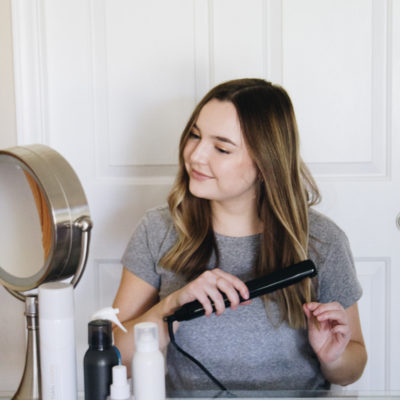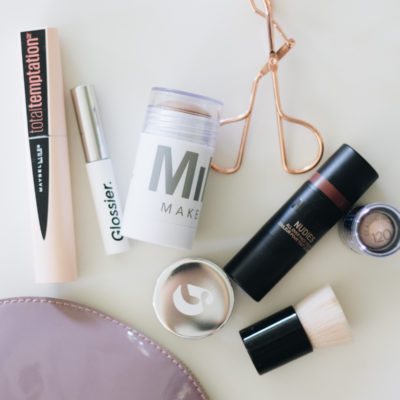A great cup of coffee is essential to a productive day. Whether you’re a first-thing-in-the-morning-only coffee drinker or an I-need-5-cups-to-do-anything sort of person, almost everyone knows the bliss that can only come from the perfect coffee.
But as the second most traded commodity in the world (after oil), coffee can have a dark side and be more harmful to the planet than you would like to think.
Thankfully, it’s not difficult to make your coffee habit more environmentally friendly. Just taking a few extra seconds to consider the products you’re buying and making a few switches can massively reduce your caffeinated carbon footprint.
1. Make your coffee at home
One of the most significant environmentally friendly things you can do is to avoid coffee shops and choose to make your coffee at home.
Manual coffee brewing creates delicious coffee without excessive energy consumption or waste. They are also commonly considered to make the best coffee and can be much cheaper.
Take advantage of drip coffee or the pour-over method for eco-friendly coffee. This involves a few simple tools and a bit of practice, but once you master the homebrew technique, you’ll never look back!
To make perfect pour-over coffee, you will need:
- A coffee grinder – aim for a sustainable manual coffee grinder (not electric) to reduce energy consumption
- A pour-over coffee brewer
- A gooseneck kettle
2. Aim for reusable, recyclable, or biodegradable coffee pods
If you can’t deal with the hassle of brewing your own coffee or can’t resist the temptation of a coffee shop, an electric coffee maker might be the compromise. Although they produce more waste than manual coffee brewing, many companies are taking steps to make their coffee machines more sustainable.
If you must go for a pod maker, aim for environmentally friendly coffee pods. Some can be recycled at specialized plants (we know this is a lot of hassle, but the planet is worth it), or look for reusable coffee pods.
3. Check the packaging
Taking a little more care over the coffee beans you buy is one of the best ways to make fair choices that help the environment and laborers.
Choose Rainforest Alliance certified coffee for farmers who actively work to protect the environment. While you’re at it, Fairtrade coffee beans are also great as they ensure everyone gets a fair wage for their labor. It might not save the world in one hit, but it is undoubtedly a step in the right direction!
Organic coffee is another excellent way to reduce your environmental impact as the beans are grown without pesticides or chemicals that could harm the local fauna or flora. Buy coffee grown as local to you as possible (although we appreciate this might be tough in some places) to reduce air miles and drink coffee more sustainably.
You can also check for recyclable or biodegradable packaging if you want to go a step further in reducing waste and making sustainable choices.
4. Bring your own to-go mug
Okay, we get it; nobody’s perfect! When you simply can’t resist the allure of the coffee shop (we’re guilty of this too), you should at least bring a reusable cup with you.
Single-serve coffee cups are one of the most significant contributors to coffee-related waste and harm to our environment. They are incredibly difficult to recycle because of the waterproofing materials used in manufacturing (this is without considering the disposable plastic lids, single-use sleeves, and many, many stirrers).
To avoid disposable coffee cups, ensure you always have a reusable cup stashed in your car for sustainable caffeine-related emergencies. Some cafes may even offer a discount for people bringing a mug from home.
5. Compost your coffee beans
Did you know that coffee grounds make excellent fertilizer? Even if you don’t have a compost heap in your backyard, sprinkling used coffee grounds around can give your plants a much-needed organic nitrogen infusion. What’s more, cats, ants, and other garden pests hate coffee! So, throwing some used coffee grounds on your flowerbeds can help discourage the use of your yard as a litter box.
If you don’t have a garden yourself, there are plenty of green initiatives in most neighborhoods. Speak to your local coffee shop to see if they have a recycling program in place, or upcycle used coffee grounds in new and creative ways.
Final Thoughts
There are plenty of more eco-friendly choices you could consider. Still, these tricks and tips should put you on the right path to reducing your environmental impact to create a better world (with better coffee).
Simple switches will help you reduce waste, conserve energy, and protect the environment… Plus save you money in the long run… There’s literally no downside!
 Using Trunk Club to Update My Spring/Summer Wardrobe
Using Trunk Club to Update My Spring/Summer Wardrobe 5 Tips For Styling a Simple Summer Dress
5 Tips For Styling a Simple Summer Dress 5 Ways to Style a Bandana
5 Ways to Style a Bandana 3 Different Ways to Curl Your Hair
3 Different Ways to Curl Your Hair How to Master the 5-Minute Makeup Routine
How to Master the 5-Minute Makeup Routine Amazon Beauty Buys Under $25
Amazon Beauty Buys Under $25 3 Ways to Make Your next Trip More Memorable
3 Ways to Make Your next Trip More Memorable Tips for Digital Spring Cleaning and Organizing
Tips for Digital Spring Cleaning and Organizing Color Trend: Marigold
Color Trend: Marigold Mental Health Update: The 3 Major Changes I Made to Get Out of Depression
Mental Health Update: The 3 Major Changes I Made to Get Out of Depression 5 Unexpected Ways to Unwind After Work
5 Unexpected Ways to Unwind After Work How to Know You’re in a Controlling Relationship
How to Know You’re in a Controlling Relationship 4 Questions I get Asked as a Professional Resume Writer
4 Questions I get Asked as a Professional Resume Writer How to Make Friends at Work
How to Make Friends at Work Getting Out of the ‘Busy’ Mindset
Getting Out of the ‘Busy’ Mindset Ask Amanda: How do I pursue the career I want without formal training?
Ask Amanda: How do I pursue the career I want without formal training? Ask Amanda: How Do I Find a Therapist?
Ask Amanda: How Do I Find a Therapist? Ask Amanda: How do I stop being jealous in my relationship?
Ask Amanda: How do I stop being jealous in my relationship?




Danielle Says
I feel like this is so important for people to see!
Danielle xx
https://www.thereluctantblogger.co.uk/
Sarah Jhonson Says
Thanks, I found your article.
sarah aldhuwaihi Says
i highly agree with this i have been doing my own coffee for at least a year since covid and the lockdown it saved me money, time since i take my coffee from home instead of going to a coffee shop.
Lesley Parker Says
Making coffee at home is definitely cheaper, but not sure if it can relly save the environment.
Ashley Says
The to go mug!! Not only is it eco friendly BUT there are so many super cute options available these days. I mean you can’t pass the tumbler aisle at Target without stopping to see what’s new! Wanted to share this link as I talk about the best thermal cups and even some awesome sustainably made ones! https://loveagoodmug.tumblr.com/post/652349552835297280/four-convincing-reasons-to-buy-a-thermal-cup
Great Article Amanda.
Ash Says
Eco Friendly Tumblers:
https://loveagoodmug.tumblr.com/post/652349552835297280/four-convincing-reasons-to-buy-a-thermal-cup
Joy Says
Good read! Personally, I make sure to live a green life as much as possible. From the hemp notebook up to the hemp bags that I use. Loving sustainable and eco-friendly hemp products. Now, I have something to add to my list.
Emilia Says
Thanks for sharing your experience, it’s appreciated. Espresso is an incredible drink, the right preparation will give you a special taste, I also advise you to find out more here https://coffeeholli.com/types-of-espresso-drinks/ about which drinks you should definitely try